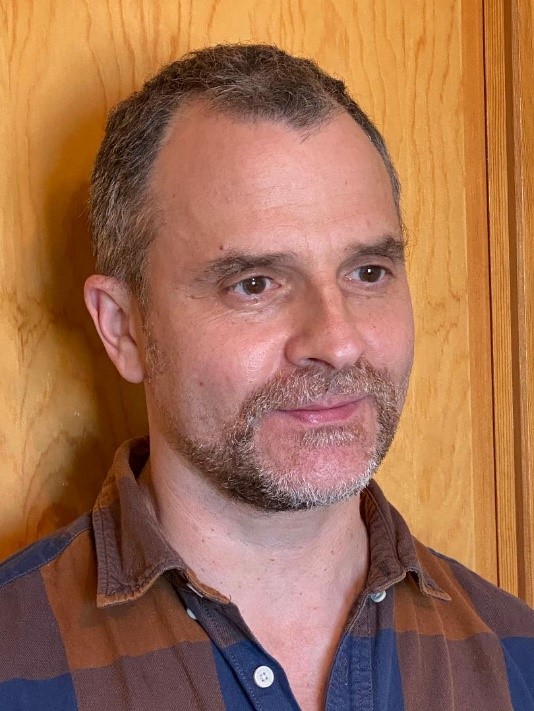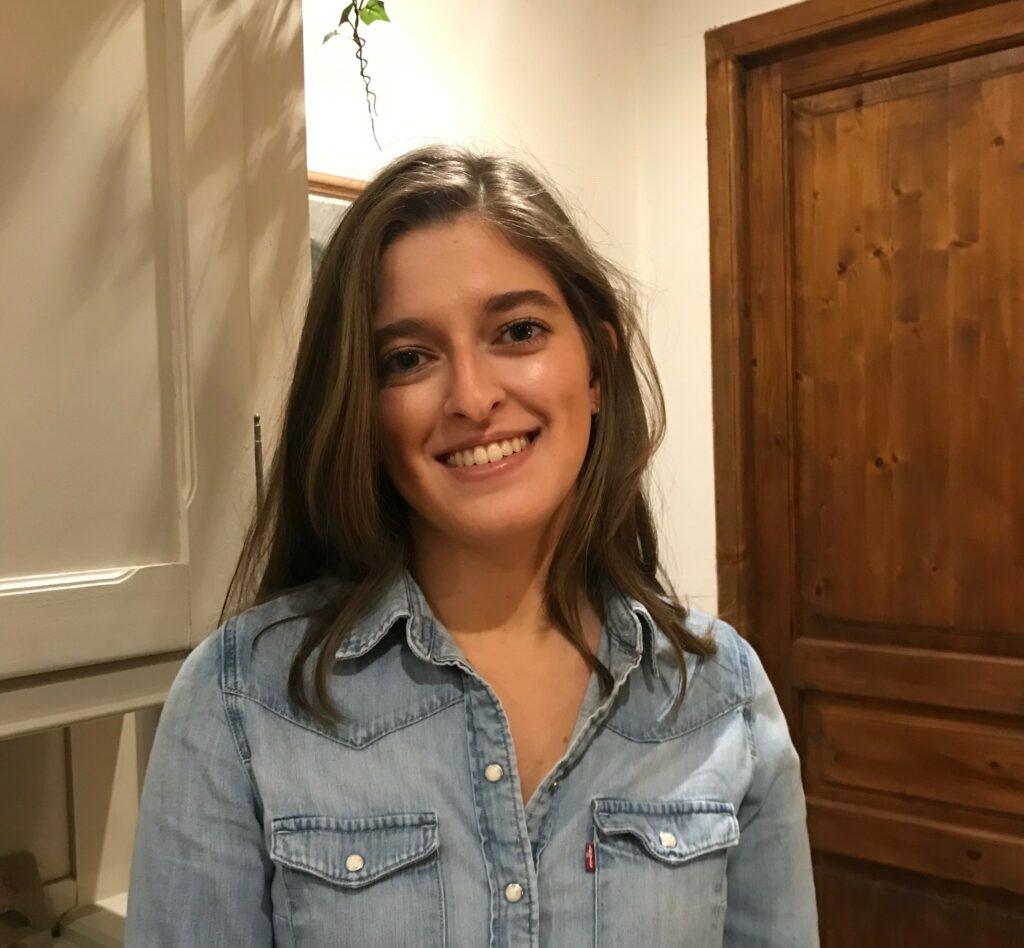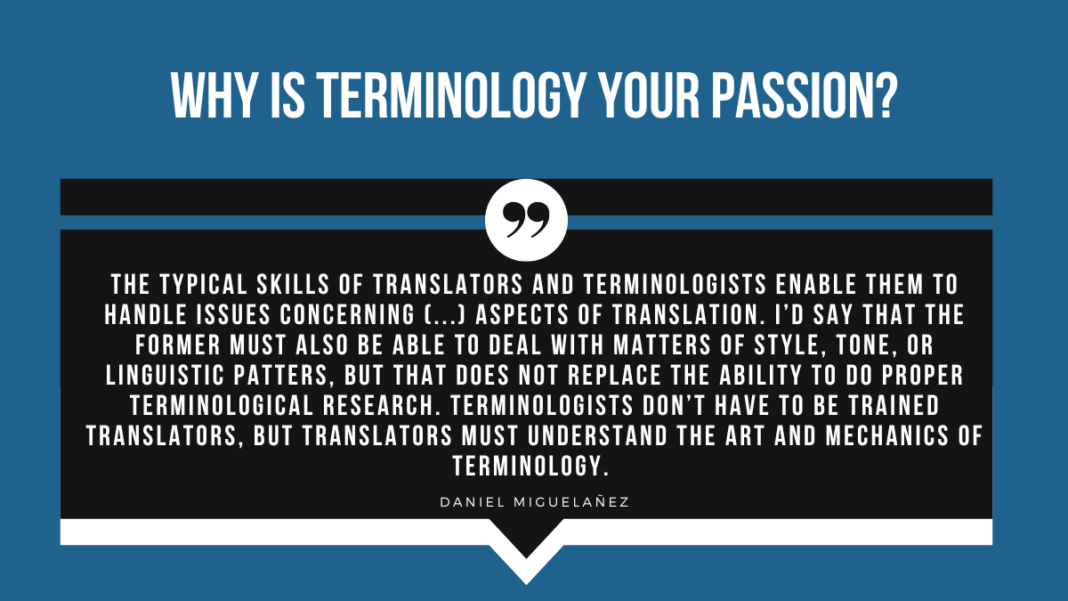
Daniel Miguelañez has a degree in English studies and in modern languages and translation. He has two master’s degrees, one of them in teacher training and the other in literary studies. He teaches at the University of Alcalá de Henares (UAH) and the Autonomous University of Madrid (UAM) in Spain. At the UAH he teaches Terminology applied to translation. His training as a terminologist has always been linked to his work as a translator. In fact, he began systematizing his knowledge of terminology in 2019, when he organized the course he currently teaches. His training as a translator – especially in the fields of culture and literature – has also determined, to a large extent, the scope of the texts on which he has focused his research activity. He is a professor of British culture, and it could be said that most of his translations belong to the cultural or literary sphere. For this reason, the TermCoord CULT project fits quite well with his previous experience and background.
As a translator and a linguist, what was your first approach to terminology when you first discovered it? Did you discover terminology at the beginning of your career as a translator and professor? What were your first impressions?
In 2013, I was commissioned to translate the biography of Lorenzo Dominguez, a noted photographer from New York. The book narrates the personal journey of a man who, after separating from his wife, finds solace―and a way of restoring himself―in photography. I had to use the right equivalents of the technical terms of the field, while also recreating the style of the original and interpret its meaning, its purpose, its ambiguities, and metaphors; my first ad-hoc glossary was a bunch of collocations, phrases, and terms from―apparently―unrelated fields. From the point of view of a strict terminologist, putting together entries such as “brownstone”, “depth of field”, and “the spray of the sunshine” might be confusing or simply wrong; for me, it made sense.
My first impression was that, because many books for the general public use a semi-specialized language, translators need to combine specific comprehension skills of certain topics with thorough terminological research, along with the ability to translate literary texts; a clear example of this would be the translation of Émile Zola’s novels. Similarly, in highly specialized articles, the accuracy and readability of the target texts rely not only on the choice of equivalent terms, but also on the syntax, the register, and the conventions of the genre. Translation and terminology always go hand in hand, and translation offers an ideal ground to understand the practicalities of terminology.
When did you start using IATE and how do you include its use in your daily work as a translator? Do you use it for both of your working languages, English and Spanish?
I started using IATE in 2018 for terminological searches in Spanish and English, and I still use it on a regular basis. I do direct and inverse translations of general and specialized texts which require the use of comprehensive, updated databases such as IATE. TermCoord also features resources such as the EU glossaries or the IATE term of the week which I use in my courses on Terminology in Translation Studies. I have even profited from the interviews in IATE; I contacted Georgeta Ciobanu, for instance, after reading an interview with her that was published on the IATE webpage. Professor Ciobanu and Patricia Brenes were the two terminologists I consulted when I began organizing university courses on Terminology. I will always be grateful for the help and support they have given me over the years. In 2019 and 2020, I invited professor Ciobanu to give a number of seminars to my students, and our professional and personal relationship continues to this date.
As a specialist in literature and culture, would you think these two domains are widely represented in IATE?
Rodolfo Maslias’ effort to make terminological projects on culture readily available in the context of the European Union is crucial. Effective communication between members of the union is dependent on a clear understanding of the norms and values present across countries, and the union is possible precisely because, beyond political and economic differences, we have been able to recognize a set of shared values. The next step is to―carefully and deliberately―begin to express them. IATE projects on European cultural events, on museums and cultural institutions, or, more recently, on sports, clearly address the need of a European Union that is defined by its culture. Glossaries and databases of literary or cultural terms are scarce and not always reliable.
In your opinion, are the fields of translation and terminology always linked? Do you think that terminology should gain more popularity among the translators? What could be done for this?
Absolutely. Translation and terminology always go hand in hand. I have recently published the translation of a book in the field of legal psychology. Upon examining a corpus of different related translations in the field, I clearly realized that, if one wishes to deliver a high-quality translation of a semi specialized text, there are at least three basic points to consider: first, the target text must show a clear understanding of the concepts regarding the topic and the relationship among them; second, the terminology of the target text must be accurate and updated; third, the target text must follow the conventions of the specific genre of the source text. The typical skills of translators and terminologists enable them to handle issues concerning these aspects of translation. I’d say that the former must also be able to deal with matters of style, tone, or linguistic patters, but that does not replace the ability to do proper terminological research. Terminologists don’t have to be trained translators, but translators must understand the art and mechanics of terminology.
As I see it, the main problem here lies in that corporations, institutions and, in general, society today, do not consider the intricacies of translation as they should, and they often confuse speed with quality. The sheer size of the fields of translation and terminology makes it impossible for many to reach a minimum knowledge and experience that might enable them to become professional translators―who, indeed, should always concern themselves with terminology as an integral part of their work. As a result, there are several translators that are forced to take on projects in different fields for a pittance, and they don’t have the means or the time to hone their skills. Besides, terminology for translators as a university subject is still too theoretical, and even when we, professors, try to keep it fairly practical, it is difficult to cover the enormous breadth of terminology in one semester, while applying remedial procedures in terms of their performance as translators and the minimum intended outcome.
As a teacher, how do you introduce terminology to your students? How do you integrate it in the translation process?
One of the first things that I tell my students is that terminology is power. Regardless of your expertise, the ability to properly use the terminology of your subject field is essential; the upside is that terminology might be of great help to improve your own praxis; the downside is that many use terminology to masquerade under a position or a title, or to wield power.
To neglect terminological issues is to disrespect the sender, the receptor and the message, and this is another critical idea in the course. Being able to do proper terminological research does not only make you a better translator, it is completely necessary. I use examples of real translations―and of real terminological issues―to illustrate this. The activities in our seminars are graded, from questions that ask students to provide examples of the differences between terms and words, to translations of specialized texts that require informed and knowledgeable decisions. Theory is only relevant as long as it can be internalized and integrated within the means at the translator’s disposal ―what is the point for a translator of learning the main recommendations regarding specific practices of definitions if they fail to compare the definition of a given term and that of a candidate equivalent? Indeed, I require that students demonstrate a clear understanding of the notions that underlie terminology work, its principles, and methods, but we do terminology work from the first day, and translation is at the core of the strategy that we follow.
The two assignments that students submit during the course are also apt for translational praxis, but these are intended to give them a sense of how to manage terminological products. In the first assignment, students have to create a handbook of terminology, which includes a mini glossary. The rationale behind this assignment is two-fold: one of the goals is that they explore a vocabulary of special interest for them; I give them the chance to expand on topics such as e-commerce, artificial intelligence, renewable energies or cybersecurity that we have seen in class, but they are free to choose the subject field they want to work on; the second goal is that they re-elaborate the theory that we see in the lectures and apply their knowledge to a specific project, whereby they create a handbook for translators specialized in the field they have chosen, including basic concepts, basic tools, webpages, resources and so forth. They earn additional points if, apart from adapting the concepts, tools and resources to their field, they are able to come up with their own invented terms―which is sometimes hilarious and always useful.
The terminological database that they elaborate as part of the projects in Term Coord is their second assignment. Working in groups of 4 or 5 students, they design and develop a terminological project which entails the creation of a glossary, a TDB, and a document explaining all the steps they have followed to achieve their goal. The database includes 100 terminological entries. The task is always a bit daunting at first, because this is a one semester course, and the time they have to familiarise themselves with terminological work is rather limited. And yet, once they have a few candidate terms and draft a first version of the database, they become truly engaged in the process and show a genuine interest in achieving a reasonably well elaborated product. The fact that they are creating a real terminological database to be published in Term Coord helps them relate their academic performance with the demands of the 21st century world. In addition, they make extensive use of the resources they find in IATE, which is of course the most real of practice for them.
The CAT tools are now dominating in the translation field and studies. Do you think they are relevant in the specific case of literary translation? Do you use them regularly?
CAT tools are a double edge sword; they can prove rather useful and efficient in all fields, but only if the translator is fully aware of the type of assistance they provide and is able to separate the wheat from the chaff. Paradoxically, without the assistance of a professional translator, the assistance of a software may turn your project into a comedy of errors. In the case of technical translation, translators can benefit from the use of translation memories or automatic translation, but they need to be particularly vigilant and conscious of contextual or localisation mistakes. I’m tempted to say that literary translation is even more complex, not for the translator―that depends on your skills and preferences―but for the CAT tools, because the chances of finding repeated phrases in literary texts are slim; also, while the nomenclature of certain technical fields is particularly esoteric, diachronic variations in specialised texts are usually slow. Some emerging subject fields (e.g., social networks, or artificial intelligence) incorporate new terms rapidly, but with an appropriate updating, your CAT tool will detect the terms and strings that typically occur in your field and will help you predict the specific issues you may encounter in your translations; in literature, repetition is indeed possible, but even when authors draw on previous traditions and use the same literary devices, they do it in new, original ways that challenge stereotypes and former ways of written expression. Different literary genres present different conventions, and the formulas and patterns of narrative texts must be taken into account when translating narrations; but the sheer size of the vocabulary in literature, and the fact that new authors eschew tradition by combining words, metaphors, genres and styles in different ways, makes it particularly difficult for CAT tools to predict the behaviour of new texts. The value of literary texts often lies in what words suggest, rather than what they literally mean. To this date, creativity is not part of what CAT tools have to offer.
For the same reason, I’ve started to do without CAT tools when working on nontechnical texts. In the past, I found it useful to use an automatic translation as a starting point for some translations, but I’ve realized that, when creativity is at work, automatic translations act as deterrents, because their lexical and syntactic choices condition your own choices as a translator, and their errors are distracting; it takes me longer to rephrase automatically translated sentences over and over, than to come up with my own words from scratch.
Terminology studies are getting more and more important in the last few years. What is your opinion on the future of terminology?
As I mentioned earlier, terminology is power. Managers of corporations and organizations today are fully aware of this, and they are reaping the benefits of the latest advancements in terminology; in some sectors, the role of terminology as a crucial resource to generate new opportunities has become conspicuous; sentiment analysis, for example, is now performed by many companies to meet the needs of their customers; the Internet of Things is already profiting from terminology management in ways that were already predicted some years ago (see, for instance, Patricia Brenes’ article The Future of Terminology in the Internet of Things, 2016). Probably, the most notable characteristic of terminology is that soon, it will enable much faster and effective global collaboration in all sectors. The implications of new discoveries in terminology for translators are many, and the scope of the projects in IATE are a good example of this.
Which advice(s) would you give to a terminology student or to a young professional who wants to get specialised in this field?
If they wish to specialise, I’d tell them to assure that they like the field and enjoy doing terminological work; this is true for every job, but terminology―the same as translation―is one of these jobs that require a full, undivided dedication; apart from the academic training and the professional experience, anyone working in the field of linguistics or literature should read all types of texts on a regular basis, and that includes books, magazines, blogs, newspapers, and so on. For those who are already familiar with terminology in an academic context, doing an internship in any company or institution would be of great help. Even if you’ve been lucky enough to attend seminars in which teachers use real material and set real case scenarios, when it comes to the nuts and bolts of working as a terminologist (or as a translator), one can only learn to cope through working in a terminology department or unit.
What additionally skills should a translator have nowadays to manage and use efficiently terminology? Can you mention any particular changes in the last few years?
IT skills are essential; there are several CAT tools and terminology software that facilitate localisation, project management and the creation of interactive terminological databases, to name but a few advantages. At the same time, using different programmes and applications requires flexibility and adaptability; the most popular CAT tools offer features that are expensive and time consuming for freelancers, and databases and glossaries are many and very different in quality; translators should follow a clear criterion when they are doing terminological research, and be systematic in their process or recreating texts. They must be rigorous and realistic, aware of their own limitations but also ambitious. There are also sectors today that demand experts in terminology management, computerized terminology, or standardisation, which, again, require deductive skills as well as intuition.
Can you tell us more about your cooperation with TermCoord for the “Terminology without Borders” project and especially for the CULT domain? What is the main focus of your contribution?
We began by designing a database of terms related to natural science museums and their collaboration with the scientific community for a sustainable future. We used a frame-based approach that enabled us to extract terms in different sub domains that were of special interest for museums, for scientists, and for the general public. Later, we decided to compile the terms of each of these subdomains in different glossaries that provide information concerning three different aspects of the initial domain, namely: first, the projects in which museums are involved; second, the terms used to designate the specimens and artifacts of the museums; third, the terminology of natural science museums.
A second project that we started in 2020 focuses on European national parks, and it describes the specific terminology of the parks, including flora and fauna, but also organizational aspects, standardisation, and procedures.

Interviewed by Cécile Mayeres
She holds a Master’s degree in Translation and Cross-Cultural Communication with a specialization in European mobility. She now does a traineeship in Communication at the Terminology Coordination Unit.

